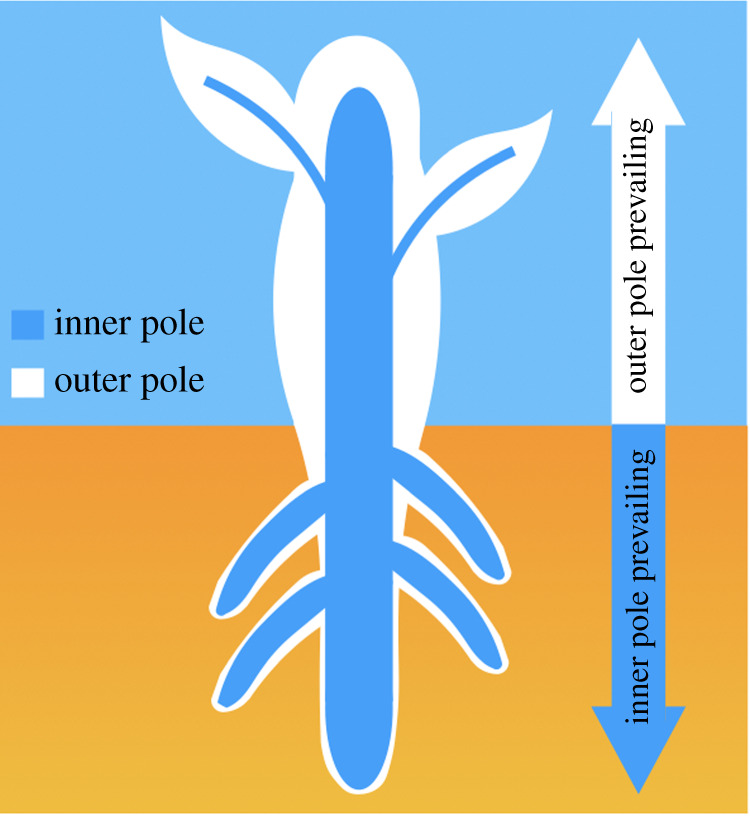Figure 2.

The inner–outer pole organization of the plant body. The inner pole of the plant body (shown in blue) is represented by the central cylinder (vascular systems and their parenchymatic cells) enclosed in roots by the endodermis (inner epidermis) and expanding through the aboveground shoot part in the form of vascular systems and their parenchymatic cells. The outer pole is covered by the epidermis with cuticle whereas the inner pole is covered by the endodermis. New roots are initiated at the endodermis/pericycle and new shoots at the epidermis. In other words, morphogenetic tissue supporting new organogenesis is epidermis in shoots and endodermis with pericycle (tissue layer under the endodermis) in roots. In older plants, root and shoot epidermis, as well as the cortex (parenchymatic tissue filling the space between the epidermis and endodermis), are often replaced by phellogen, which is initiated by phloem parenchyma in shoots and pericycle in roots (not shown). In trees, phellogen produces the bark of the tree trunks (not shown). (Online version in colour.)
